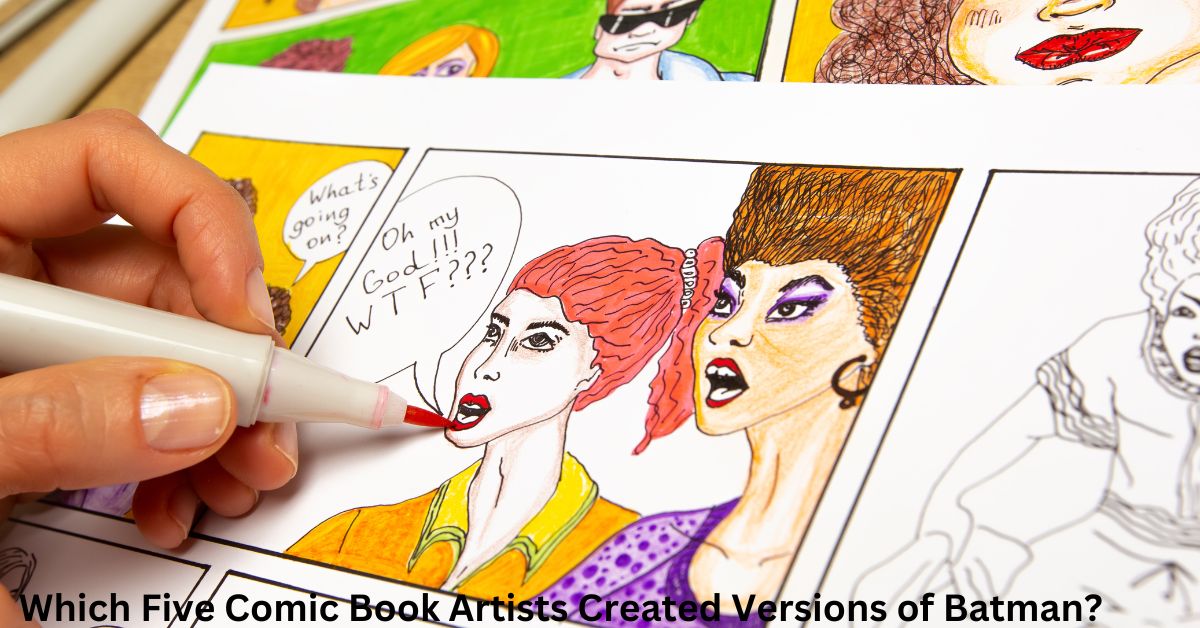Batman, the notorious caped crusader, has been deciphered and reimagined by various gifted comedian book craftsmen all through the a long time. From his coarse beginnings in the 1930s to his modern-day emphasess, Batman has experienced different changes beneath the gifted hands of craftsmen who have cleared out an permanent check on the character’s bequest.
In this article, we’ll dive into the work of five comedian book craftsmen who have made their forms of Batman, each contributing to the wealthy embroidered artwork of the Dull Knight’s mythos.
Bob Kane
Sway Kane holds the qualification of being one of the co-creators of Batman, along with author Charge Finger. In 1939, Batman made his make a big appearance in “Criminologist Comics #27,” outlined by Kane. Kane’s adaptation of Batman was characterized by a dim and brooding deportment, with a smooth, stylized ensemble that has gotten to be synonymous with the character. Kane’s commitments to Batman’s visual personality laid the establishment for future specialists to construct upon.
Straight to the point Miller
Frank Mill operator is eminent for his powerful work on Batman, especially his realistic novel “The Dim Knight Returns,” distributed in 1986. Miller’s abrasive and dystopian depiction of an maturing Batman coming out of retirement to battle wrongdoing reverberated with gatherings of people and re-imagined the character for a unused era artist. His striking imaginative fashion and narrating ability made a difference cement Batman’s status as a complex and multi-dimensional figure in the comedian book world.
Jim Lee
Jim Lee is celebrated for his energetic and profoundly point by point work of art, which has graced the pages of various Batman comics. Lee’s collaboration with author Jeph Loeb on the “Batman: Quiet” storyline is especially eminent, displaying his capacity to capture the notorious saint in action-packed scenes filled with escalated and show. Lee’s commitments to Batman’s visual mythology have cleared out an persevering affect on the character’s visual legacy.
Neal Adams
Neal Adams is venerated for his practical and energetic portrayal of Batman amid the late 1960s and early 1970s. Adams’ craftsmanship brought a unused level of modernity and profundity to Batman comics, with his accentuation on life systems, development, and facial expressions. His notorious covers and insides work of art made a difference rethink Batman’s visual stylish amid a significant period in the character’s history, impacting eras of craftsmen to come.
Greg Capullo
Greg Capullo’s collaboration with essayist Scott Snyder on the “Batman” arrangement amid DC Comics’ Modern 52 time earned far reaching recognition. Capullo’s striking and expressive fashion breathed unused life into the Dim Knight, imbuing the character with a sense of dynamism and control. His consideration to detail and dominance of narrating strategies made his run on “Batman” a standout minute in the character’s storied history.
In conclusion, Batman’s persevering notoriety and social importance can be credited in portion to the commitments of these five comedian book craftsmen. From Bounce Kane’s spearheading vision to Greg Capullo’s advanced rehash, each craftsman has cleared out an permanent check on the Dull Knight’s mythos, guaranteeing that Batman remains a ageless image of equity and valor in the world of comics.
Key Takeaways
Artistic Styles: Each artist’s portrayal of Batman reflects their awesome artistic style and vision.
Character Evolution: Through exceptional eras, Batman’s look and character have developed beneath the steerage of those artists.
Impact on Pop Culture: Their work has now not handiest encouraged comic e-book artwork however additionally famous subculture at huge.
Fan Reception: Batman fanatics have numerous possibilities for distinct artists’ interpretations.
Advantages of Comic Book Artists
Creative Freedom: They can interpret characters like Batman in specific ways.
Artistic Recognition: Their work is well known and recognized in the comedian book community.
Collaboration: Artists collaborate with writers to carry memories and characters to existence.
Legacy: Their contributions can define characters for generations of fans.
Disadvantages of Comic Book Artists
Deadlines and Pressure: Tight closing dates and excessive expectancies can affect artistic exceptional.
Artistic Criticism: Their interpretations can also face criticism from lovers or critics.
Job Insecurity: Freelance paintings and marketplace changes can impact job stability.
Creative Burnout: Continuous advent under strain can also cause burnout.
Table
| Artist | Notable Version of Batman | Key Works/Series | Style/Influence |
|---|---|---|---|
| Bob Kane & Bill Finger | Original Batman | Detective Comics #27 (1939) | Classic, golden age look; iconic design |
| Neal Adams | Dynamic Batman | Batman #251 (“The Joker’s Five Way Revenge”) | Realistic, dynamic, and detailed |
| Frank Miller | Dark Knight Batman | The Dark Knight Returns (1986) | Gritty, noir-inspired, darker tone |
| Jim Lee | Modern Batman | Batman: Hush (2002-2003) | Sleek, muscular, highly detailed |
| Greg Capullo | New 52 Batman | Batman (New 52 series, 2011-2016) | Dark, detailed, with a modern edge |
FAQs about Which Five Comic Book Artists Created Versions of Batman?
Q: Are there any other striking comedian book specialists who have worked on Batman?
A: Yes, there are numerous other skilled craftsmen who have contributed to Batman’s bequest, counting but not constrained to: Alex Ross, Brian Bolland, Dave McKean, and Tim Sale.
Q: How has Batman’s appearance advanced over the years?
A: Batman’s appearance has advanced essentially since his make a big appearance in 1939, with different craftsmen putting their possess one of a kind turn on the character. Whereas certain components of his ensemble have remained steady, such as the cape and cowl, specialists have tested with distinctive translations of the character’s plan, reflecting changing social and aesthetic trends.
Q: What are a few basic Batman comedian book storylines to read?
A: A few fundamental Batman storylines incorporate “Batman: Year One” by Straight to the point Mill operator and David Mazzucchelli, “The Murdering Joke” by Alan Moore and Brian Bolland, and “Batman: The Long Halloween” by Jeph Loeb and Tim Deal. These stories offer compelling accounts and grandstand the abilities of the specialists involved.
Conclusion
Batman’s travel through the pages of comedian books has been molded by the imaginative vision of various skilled craftsmen who have brought their special styles and points of view to the character. From Weave Kane’s spearheading outlines to Greg Capullo’s advanced reevaluation, each craftsman has contributed to Batman’s persevering bequest, guaranteeing that the Dim Knight remains a cherished and notorious figure in well known culture artist. As fans proceed to celebrate Batman’s undertakings, they will without a doubt be captivated by the assorted imaginative translations that proceed to rethink the character for modern eras of perusers.










